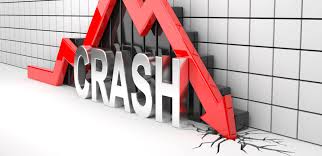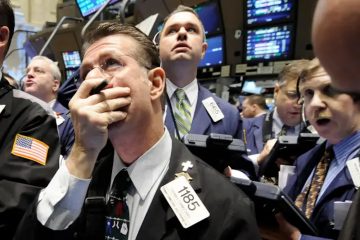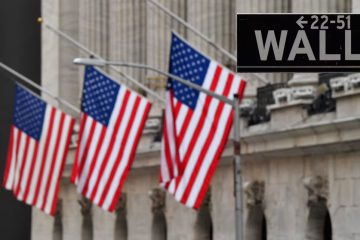Why the Trump Bump Has Set Us Up for a Market Crash

Donald Trump’s economic platform has sent stocks skyward.
That’s great for anyone already invested in the stock market, and planning on selling soon. But anyone who has years before they cash in their 401(k) should beware: The Trump Bump will make it far, far tougher to make money in the stock market in the years ahead. It may even set some investors up for big, big losses.
Wall Street hailed Trump’s triumph on Nov. 8 as the dawn of a pro-business, growth-spurring revolution. His pledge to roll-back regulations, slash personal and corporate taxes, and lavish $ 1 trillion on renewing infrastructure has produced a rare, raging bull-market in optimism, both on and off Wall Street. Although the hard economic numbers don’t yet show improvement––GDP rose just 1.9% in the fourth quarter––corporate America and investors now perceive far sunnier times ahead than the gloomy view that prevailed before the election.
“It’s the expectation of lower corporate costs from tax reform and deregulation, just look at the performance of the banks,” notes Chris Brightman, chief investment officer of Research Affiliates, a firm that oversees strategies for $ 169 billion in assets for mutual funds and ETFs. “In addition, the market expects faster top-line sales growth resulting from a significantly higher economic growth rate.”
Indeed, the combination of expense reductions from a shrinking burden of regulations, and faster growth driven by tax cuts that enable companies to keep more of the dollars gained from investing in new plants, fabs, and productivity-enhancing tech gear, should produce far higher profits going forward.
That certainly sounds good to investors. Trump’s proposed policies have propelled a double-digit rise in share prices in just three months, pushing the Dow past 20,000, and beyond. The question is whether, given the high levels where stock prices stood pre-election, and the astounding run-up since then, investors have raised the bar for corporate performance so outrageously high that even if Trump does deliver on what he has promised rich returns may still be out of reach.
So let’s examine whether the Trump Bump, despite the president’s promising policies, spells doom for the stock market’s future.
Since the election, the S&P 500 has spiked 11.3% to close at 2381 on March 2. That run has raised the index’s total market cap from $ 19.1 trillion to $ 21.6 trillion, a gain of $ 2.5 trillion. Think of that $ 21.6 trillion as the price investors are now paying for their shares.
In 2016, the S&P produced $ 865 billion in earnings. The price-earnings multiple, or P/E, stood at 22 on Nov. 8, a figure that far exceeds the historical average of 16, and the norm of 19 since around 1990. Since then, the P/E has risen to 25. The surge has reduced the S&P’s dividend yield from 2.3% to 2.0%. Same payments on more expensive shares.
So exactly how much has the Trump rally raised the hurdle for stocks? The best measure is to compare how fast earnings needed to grow at the S&P’s pre-election valuation, and how rapidly they need to wax now that they’re $ 2.5 trillion more expensive. We’ll assume that investors want an 8% annual return over the next eight years—the possible duration of a Trump administration. That’s around the goal that pension funds establish for their equity portfolios. In the pre-election scenario, stocks were yielding 2.3%, so they needed to rise, and garner capital gains, of 5.7% to reach the 8% bogey. At today’s higher prices, they need to gain 6% a year. Add the lower, 2% dividend yield, and the total return is a matching 8%.
We’ll also assume that over those eight years, the P/E falls to 19, the average over recent decades. We’ll proceed as if both pre-and post-election S&Ps were one big stock that we’ll call Pre-Inc and Post-Inc, with Pre-Inc selling at $ 19.10, and the Post-Inc at $ 22.60, reflecting their relative values (with dollars substituting for trillions). Both “companies” are earning 87 cents a share (the $ 865 billion in profits, once again reduced to dollars).
To reach that 8% goal, Pre-Inc must raise its stock price to $ 29.80 or 82% by 2025, and earn $ 1.57 a share (at our 19 P/E). But Post-Inc faces a far steeper climb, for two reasons. First, the price increase lowered its dividend yield, requiring faster earnings growth to get to an 8% return. Second, Post-Inc started with the Trump Bump’s 11% premium, so it needs to not just grow faster, but build that growth on a higher starting price, requiring a much higher ending price, and final earnings, to get to 8%.
To reach that goal, Post-Inc must hit $ 34.40 in eight years, and earn $ 1.81 a share. Those numbers are both 15% higher than the hurdles required for Pre-Inc. Here’s the number that really counts: Before the Trump Bump, the S&P––or our Pre-Inc––needed to raise earnings 7.5% a year to reach 8%. Because of the post-election spike, the index, represented by Post-Inc, needs to lift profits 9.9% a year, or 2.4% points more.
At the end of our eight-year window, the market needs to deliver $ 240 billion, or 15% more a year in annual earnings to deliver the 8% return.
Keep in mind that this analysis is based on total S&P earnings. What matters to investors is earnings-per-share. If the market experiences significant dilution ovcr those eight years, either because companies issue a lot more stock than they repurchase, hand out more and more options to top executives, or newcomers challenge incumbents in a number of industries, the bar will rise far higher.
But here’s the reality that should sway even the true believers. Trump pledges to get the economy growing at 3% to 4%. Say he reaches the higher goal. In the absence of big dilution, that would raise earnings 6%, including 2% inflation (GDP gains, and declines, are adjusted for inflation). That’s nowhere near the 9% requirement needed to reach an 8% annual return.
Another problem is that although profits peaked in late 2014, they’re still high by historical standards. The bulls are betting that, from already lofty levels, earnings can somehow far outgrow the overall economy even if the overall economy practically doubles its growth rate. If that happens, the president might actually deserve a “Thanks, Trump!”
The best bet is that returns eight years from now will be in the low single-digits at best. Brightman forecasts that they’ll be either in that range, or “modestly negative.” Of course, this writer, as did at times the president, thought stocks were extremely pricey, before Trump’s amazing win, and they’ve jumped since. The market is a hotbed of emotions in short interludes. But numbers tend in reign over long periods. The irony is that potentially excellent policies have raised expectations Trump Tower-high. Hope and emotion has gotten us to this summit. Market math will dictate where we go from here.










